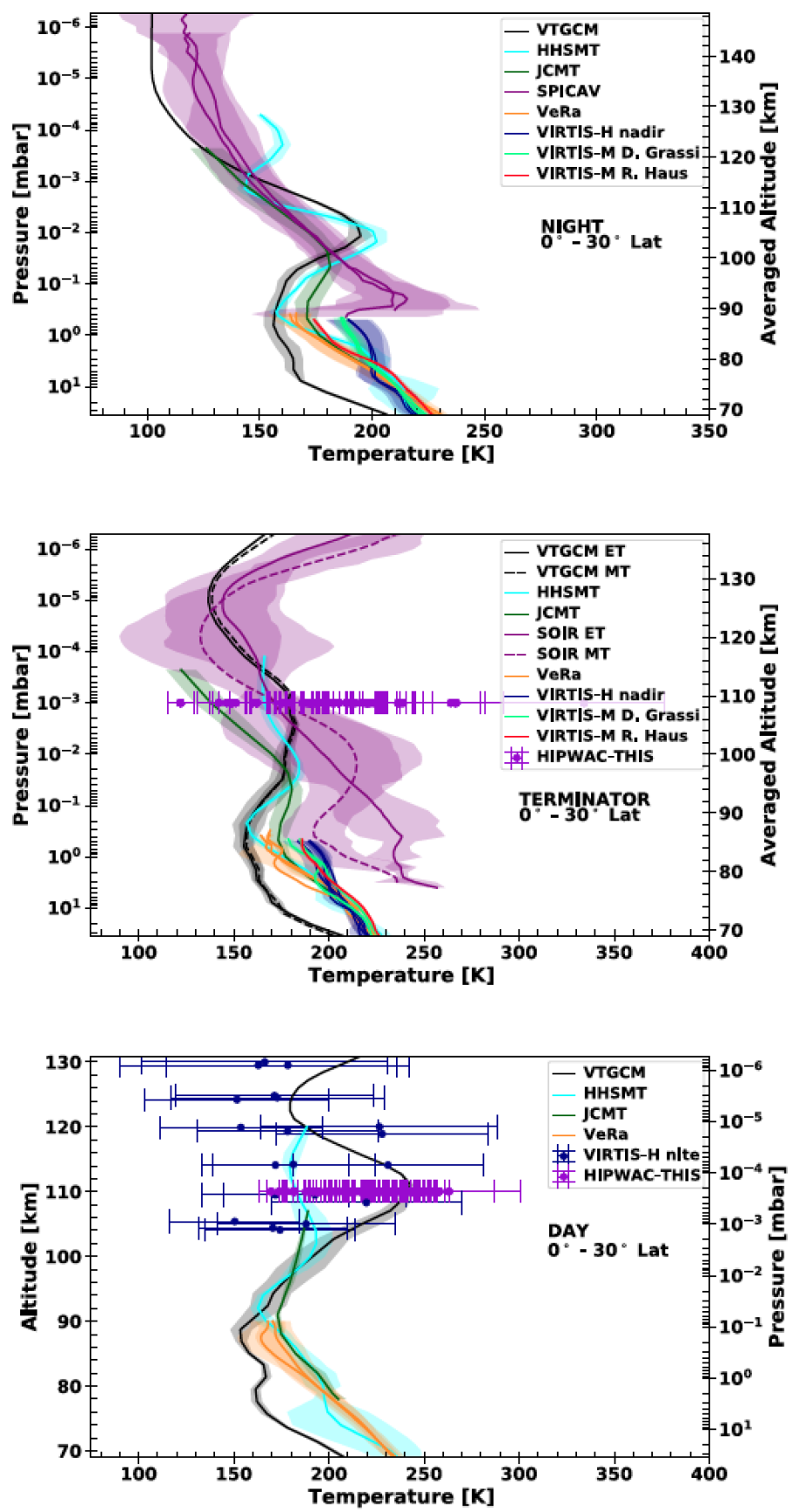Publication: Journal of Geophysical Research, Planets; Authors: A. S. Brecht, S. W. Bougher, D. Shields, and H. Liu
Venus’ atmosphere has a cloud layer (~40 km - ~70 km) that encompasses the whole planet that separates the lower atmosphere and upper atmosphere. Images of the clouds show planetary-scale wave patterns that exist from the equator to mid-latitudes and are thought to be a combination of Kelvin and Rossby waves. This work examines how the Kelvin and Rossby wave change the upper atmosphere by using a general circulation model of the upper atmosphere (~70 km - ~300 km altitude). More specifically, this project analyzes the wave induced variations in temperature, winds, and a few chemical species.

Combined temperature profiles from the Venus Thermosphere General Circulation Model (VTGCM) and observations near the equator (Lat = 0-30 N+S). Top panel is night side, middle panel is terminator, and bottom panel is day side. The VTGCM profile is the mean of the last four days of the “combined case” with the shadowing representing the maximum and minimum value during the last four days at that specific vertical level. The observations are from the Venus Express instruments and ground-based observations. The shadowing around the observation profiles represent averaged profiles uncertainties, while the error bars are used for individual observations uncertainties.
This work also examines how a simplified connection to the lower atmosphere changes the behavior of the Kelvin and Rossby waves and thus variations in the upper atmosphere. The results of this work demonstrate that waves provide variations between ~70 km and 110 km altitude and are sensitive to the simplified lower atmosphere connection. The wave induced variation does not reproduce observed thermal variations but it does reproduce observed O2 IR nightglow intensity variation. Overall, planetary waves do affect the upper atmosphere but do not propagate high enough in the atmosphere to provide all the observed variations.